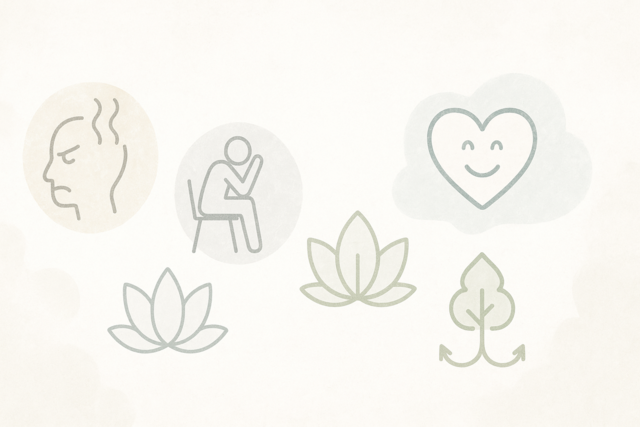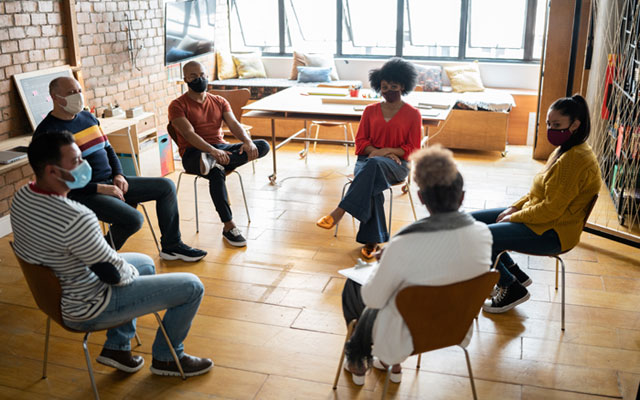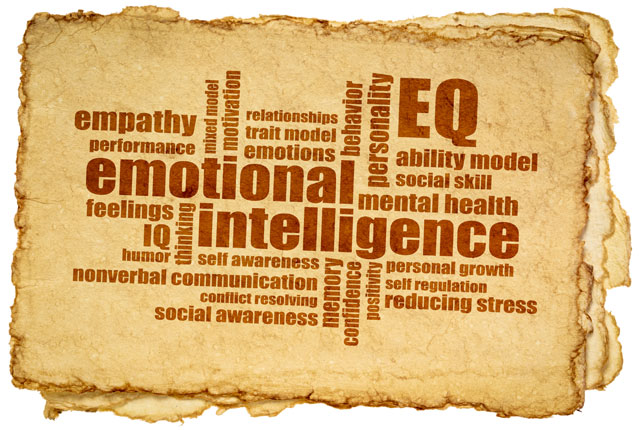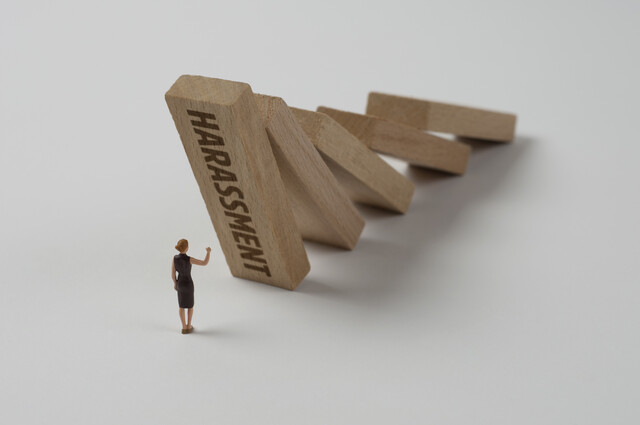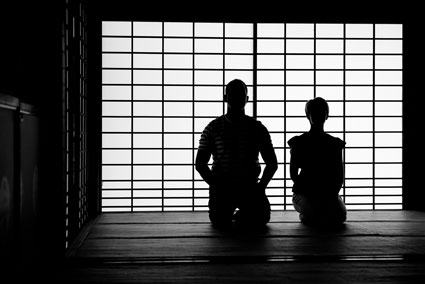A. Culture
In the breakdown of groups, separations are commonly made on the basis of one's financial status or according to economic inequalities; for instance, upper class versus lower class.
Let's consider other types of inequalities that persist in society. Note: While some may call these inequalities, the term discrimination is often used when discussing biases with the power to yield life-altering consequences, such as job hiring and prohibitive or exclusionary stances based upon specific differences among people.
When isolating particular inequalities, two of which that have long plagued society include those of gender and age, or as the commonly known ideologies of sexism and ageism.
B. Sexism
"Men have always been afraid that women could get along without them." -- Margaret Mead
While the term sexism implies a bias based upon one's gender, more often than not sexism is used to relay a degradation in some form to a woman as opposed to a man. While this is not intended to create any type of stereotype, it is rather a fact that in the world women have been treated as lesser than men.
Simply put, gender, like socioeconomic status, has the profound ability to shape an individual's opportunities and experiences throughout the course of the person's life.
Some feel that the term "sex" is different from that of "gender" because the latter is a social construct outlining the specific social and cultural roles that men and women are to follow. However, the point is to focus on the ways in which women have been subordinated in society.
As Alan Wolfe observed in the New Republic article entitled, "The Gender Question": "Of all the ways that one group has systematically mistreated another, none is more deeply rooted than the way men have subordinated women. All other discriminations pale by contrast."
Women, who compose half the world's population, do two thirds of the world's work, earn one tenth of the world's income, own 1/100th of the world's property, and still get paid approximately 80 percent of what men earn.
Though to some, sexism may seem like an innocuous slight, in fact, studies have documented that sexism can result in very real economic disadvantages, including significant pay differentials and occupational segregation. It can affect a woman's pursuit of higher education, the ability to which she is able to perform both in her studies and on the job, and, thus, ultimately the pay rate she is able to generate for her level of education and work performance.
Further adding salt to the wound is that no one denies the fact that throughout history women have been viewed as being on a lower plane than men. Over the course of literally centuries, women's groups, political adversaries, and the suffragette or women's rights movements have all lobbied for fair and equal treatment in terms of voting, freedoms of speech and dress, and equality in the workplace.
To fully appreciate the fact that women in society have clearly not held positions of equal prominence or that many industries are viewed to be predominately male-centric, consider the fact that we in the United States have never had a female president and that women are still highly under-represented in the fields of physical science, technology, engineering, and mathematics.
Furthermore, each time a woman is appointed to a high profile position, it is important to point out that she is the first woman to ever hold such an office, as in the case of Nancy Pelosi, speaker of the House, or that she is paving the way for future generations of women.
The acknowledgement of how remarkable these achievements are only serves to further drive home the fact that sexism has been around for ages. Without the power to alter public perception in terms of equality for women and men, the ancient ideas will persist and the status quo will remain either the same or be slow to change.
C. Washington Post Studies Gender Roles in the 1990s
To learn how far women have progressed in their battle to gain equality and the toll that the shifting roles have taken on marital relationships, the Washington Post did a three-part study entitled "Gender Roles in the '90s."
For this piece, the newspaper provided a background outlining the current gender equality issues with such statistical information as:
- Between 1970 and 1995, the percentage of women ages 25 to 54 who worked outside the home has climbed from 50 percent to 76 percent, as reported by sociologists Suzanne Bianchi and Daphne Spain in their book Balancing Act.
- The percentage of lawyers and judges who are women doubled to 29 percent between 1983 and 1996, while the percentage of female physicians increased from 16 to 26 percent. Today, nearly a third of all professional athletes are women, almost double the proportion in 1983.
To complement the statistics and offer a realistic and humanistic element to the story, the Washington Post conducted extensive polls among both men and women on such subjects as a) working outside the home versus staying home with the children, b) the division of household duties, and c) the values of each gender.
|
The findings of the Washington Post's polls were as follows:
- Both men and women have found that the strain of this new societal world has made maintaining marital relationships, raising children, and leading fulfilling lives to be more difficult than before.
- Men and women both agreed they should have equal work opportunities.
- Men said they approved of women working outside the home.
- Both men and women, surprisingly, said it would be better if women could simply stay home and take of the children and the house.
- The majority of men relayed they were happy to share child care and domestic duties with wives working outside the home.
- Yet, the study revealed that working mothers still shoulder most of the responsibility in terms of doing chores and taking care of their children and that they are displeased with the amount of assistance that their husbands provide.
- With respect to social and political perspectives: men support increases in defense spending, where women lean more strongly toward increased spending for health care for uninsured families.
- Women value having some form of religion in their lives and close personal relationships, where men desire to have successful, lucrative careers and place a premium on a healthy, active sex life.
- Most revealing, though, was that men and women share an equal sense of confusion about how to incorporate all of the new role expectations into their daily regimes. In light of their regular pressures and stressors, they question the degree to which they are to strive for equality in all areas of their lives.
|
D. Ageism
Shifting gears a bit and moving to a different form of inequality and discrimination, we now will focus on ageism.
When researching ageism, you are certain to find numerous print and online resources geared to elders and identifying ageism as one of the pervasive prejudices throughout all human society.
Not simply a domestic issue but one that occurs all over the world, ageism is seen to often be accompanied by widespread mistreatment, abuse, manipulation, and denial of proper services. This description does not begin to mention unfair treatment seniors receive in employment situations.
To address workplace issues facing seniors, the Age Discrimination in Employment Act was passed in 1967. Under this law, denial of privileges, in addition to other forms of unfair employee treatment on the basis of age, was prohibited. In 1978, the act was amended to protect employees up to 70 years of age, and, in 1986, it was amended again to protect mandatory retirement.
Why are seniors singled out and made to feel incompetent or less valuable?
This is because quite often in our society, seniors, purely because of age, are viewed as being less capable, uninformed, and not always in control of all of their faculties. Hence, in a workplace setting or other forum, there are those who consider the senior's contributions to be less than those of a younger stature.
As such, seniors are not only often made to feel bad about themselves and their abilities, but they are also deprived of genuine opportunities to demonstrate their skills and to generate income.
Because a good many senior citizens are unable or unwilling to speak out on their own behalf and have no family or support system, outside agencies and caregivers need to advocate for their rights and intervene in situations when it looks as if they are being shortchanged while on the job, haggled with by a salesperson, saddled with improper service, taken advantage of by a scam artist, or outfitted with substandard conditions.
To offset the negative view of elders in American society and to provide for their protection, the Administration on Aging, the federal agency representing the rights of older persons and their concerns, stresses the importance of heightening the awareness among other federal agencies, organizations, groups, and the public as to the valuable contributions older Americans make to the nation, as well as to alert them to the needs and vulnerabilities of older people.
Because Americans are living longer, fuller lives, it has become an essential part of our society to seek out ways to integrate rather than ostracize senior citizens.
Currently, one in six Americans, or an estimated 44 million people, are age 60 or older. Four million persons are age 85. And further contributing to the fact that persons of increased age deserve respect and care, it has been determined that people are expected to live an additional 19 years, with 84 being the average life expectancy.
To improve the increased longevity of persons beyond age 65, many efforts have been introduced to ensure elder persons are able to lead fuller, more vital lives in contrast to the past, when the 65-year-old demographic was continually being written off as having less merit than its youthful counterparts.
E. Ageism and Caregiving in Ethnic Cultures
In traditional Chinese, Latino, and African American households, moving far away from the family is not the norm. Rather, it is expected that as adults, children of African, Hispanic, and Asian descent act as caregivers to their parents.
Within cultures where multigenerational living is a normal part of their lives, caregiving is simply a component of the overall life process. Children grow up to take care of their parents and, once fully grown, their children are expected to take care of them.
Within these cultures, Chinese especially, elders are viewed to possess great wisdom and life experience. Hence, elders are honored, respected, and cared for by the younger generations.
In such societies, caregiving, rather than being perceived as a chore, is seen as part of the natural life cycle. In many Chinese, Latin American, and African American families, parents move in with their children when their children get married. In turn, the parents aid in raising their children's' children, and then, when the time comes to care for the parents, their offspring are on-site to care for them to the very end.
F. Ageism in America
Yet, in the United States, senior status takes on a whole different meaning. Unfortunately, opposed to respect and honor, quite often, elders in America find themselves merely struggling for a place in society.
In a 2006 story run on MSNBC's Web site entitled, "Ageism in America," Dr. Robert Butler, president of the International Longevity Center-USA and the person who 35 years ago coined the term "ageism," stated, "Concerns of the elderly have moved higher on the national agenda. Daily we are witness to, or even unwittingly are participants in, cruel imagery, jokes, language, and attitudes directed at older people."
The article also explained the fact that whether ageism exists within our society, which is captivated by an attractive, youth-driven culture, is not really an issue worth debating. What is likely to be questioned is the degree to which elderly issues will come to the forefront of the national agenda as the eldest of the 77 million baby boomers are now approaching their 60s.
Will the negative stereotypes, such as increased dependency and lack of competency, associated with ageism magnify in the coming decades as baby boomers become senior citizens or become less off-putting?
In the same MSNBC story, John Rother, policy director for the American Association of Retired Person (AARP), responded to the question by stating, "Boomers by the sheer size of their population (tens of millions) are bound to change the public perception of aging."
In recent white papers, International Longevity Center's Robert Butler stated, "We all aspire to live to be old, and consequently we all must work to create a society where old age is respected, if not honored, and where persons who have reached old age are not marginalized."


